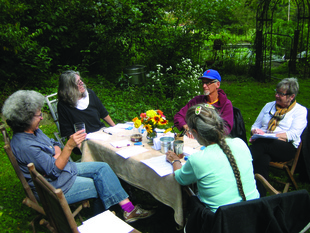 My Gift of Grace photo
My Gift of Grace photo Gilah Tennenbaum is no stranger to the big questions of life and death. Ten years ago, her holiday gift to family and friends was a gift-wrapped set of living will documents and other end-of-life paperwork. Even so, she worried a bit when she turned her most recent birthday party into a chance to play My Gift of Grace.
Her invitation explained, “Winner of the California HealthCare Foundation’s End-of-Life Challenge, this game helps families, friends, and co-workers get unstuck and have important conversations. I don't see playing this game as a negative, sad or depressing thing to do. I am not planning to die soon. I see playing the game as life affirming and important sharing for me to do with friends. I have been wanting to play the game for some time, and this seems like a great opportunity.”
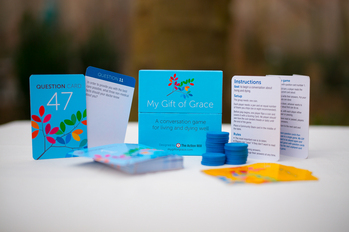 Photo by James Felder
Photo by James Felder The seven friends who attended admitted that, yes, they were afraid of being vulnerable, of being judged. “But none of that happened,” Gilah reports. “It was wonderful. People loved it.” One friend asked when they could play again. Another has since completed the paperwork from that decade-old holiday gift. And for the friends attending who are living with serious illness, Gilah says, “It helped me better understand them and what they need.”
I had heard about My Gift of Grace from Gilah when she gifted me a game of my very own on the Death Café’s first road trip, to the White Eagle Memorial Preserve. We made a coffee date for her to tell me more about the cool new conversation game created by her nephew, Jethro, and his partners at Action Mill, an east coast design shop that creates tools to improve communication and decision-making about end-of-life care. I found much to relate to in the partners' background in community organizing and nonviolent action. I was excited by their approach.
But I remained a bit stuck, myself, when it came to playing the game. I kept it on my desk, took it with me over Thanksgiving, tried to imagine inviting friends to play. The timing never seemed right – but the truth is, after supporting conversation about death among hundreds of strangers, I still feel awkward about raising the topic with my closest friends.
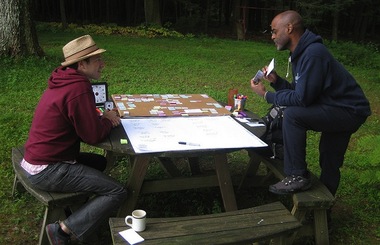 Action Mill partners Jethro & Rob with an early prototype
Action Mill partners Jethro & Rob with an early prototype Big questions, met with sincerity, vulnerability, laughter, tears. “What’s happening here is connection,” one person observed part-way through our session. And reflection. “Play the game over and over,” Action Mill encourages. “Your answers will evolve as you get better talking about life, death, and dying.” (They suggest recording your answers on post-its kept with the card set, annotated with the date of each round of play).
The My Gift of Grace website has tips for inviting others to play, and a Conversation to Action Toolkit to turn your answers into “a set of documents, plans, and rituals.” And the Action Mill’s sister site Death & Design features a number of other innovations that support the conversation.
As for the name? Nick told Modern Loss: “Gift comes from Martha Keochareon, a nurse from South Hadley, Mass. who learned she had pancreatic cancer. She called her old nursing school and suggested they send over students who wanted to learn about hospice. This flipped our thinking on what people at the end of their lives need. Turns out, it’s the same thing the rest of us need: to feel useful and needed. To give.
“Grace has to do with how people express what they want at the end of their lives: dignity, security, love. To us it’s about how we aspire to live our lives: connected to the people around us.”


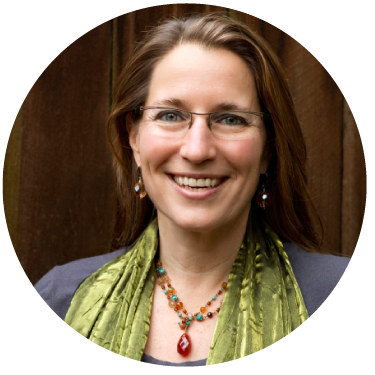
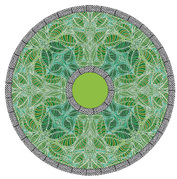
 RSS Feed
RSS Feed